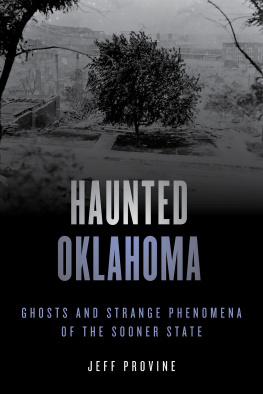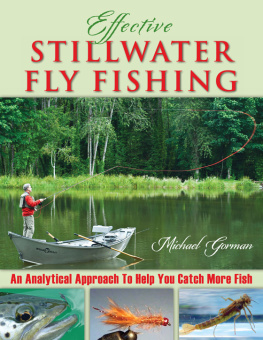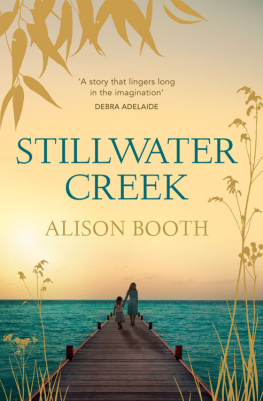
IMAGES
of America
STILLWATER

This granite marker reminds passersby where and why Oklahoma was opened for settlement. Because of the Boomers location on Stillwater Creek, this was the battleground of would-be home seekers and the US Marshals. (Authors collection.)
ON THE COVER: This early-day photograph shows the hustle and bustle of Stillwater in the 1920s. Lytton Hardware (right) was a popular stop where residents bought much-needed items for building and maintaining their homes and farms. Today, Stillwater is a town of 45,000 and has earned its place as a vibrant and growing city. It seems each year another award is bestowed upon the city, which has been recognized as Oklahomas Safest City, one of Americas 100 Safest Cities, Oklahomas Friendliest Town, one of Americas Brainiest Cities, a Premiere Educational City (with one of Oklahomas top school systems), one of Americas top-six fastest-growing small cities, and a city offering the best quality of life, among other titles. (D. Earl Newsom.)
IMAGES
of America
STILLWATER
Stan Tucker
Foreword by Winfrey D. Houston

Copyright 2014 by Stan Tucker
ISBN 978-1-4671-1310-6
Ebook ISBN 9781439648551
Published by Arcadia Publishing
Charleston, South Carolina
Library of Congress Control Number: 2014941399
For all general information, please contact Arcadia Publishing:
Telephone 843-853-2070
Fax 843-853-0044
E-mail
For customer service and orders:
Toll-Free 1-888-313-2665
Visit us on the Internet at www.arcadiapublishing.com
Dedicated to my folks, Billy and Chris Tucker; my kids, Opie and Annie Tucker; and my partner, Michael McDermott
CONTENTS
FOREWORD
I have always been proud of my hometown on the Oklahoma Plains. I was born in Stillwater in 1926, and it has been my home ever since. My grandparents Dr. Campbell Rice and Nancy Frances Holbrook homesteaded west of Perkins in 1891. In 1910, they built a home at Tenth Avenue and Husband Street and moved to Stillwater.
I am the third generation of my family living in the area, and my great-grandchildren who live here make up the sixth generation. I have so many memories here that I do not have many surprises.
Part of my pride in being from Stillwater comes from its history. I believe the city that exists today would please its early leaders. It has a flourishing university that is a focal point for its residents. Main Street businesses thrive, and there is an entrepreneurial spirit that the towns founders would relate to and appreciate. After all, the very town exists because of their ingenuity.
Nothing came easily to Stillwater in the early days, as you will read on. Its status as a county seat and site of Oklahoma State University did not happen by accident. Rather, fueled by a hopeful vision of the towns future, residents employed shrewdbut ultimately effectivetactics to secure Stillwaters place as a hub for education and enterprise.
I hope you will find inspiration and entertainment in these pages. My thanks to Stan Tucker, a longtime friend of my family whose love for Stillwater is apparent, for writing this book that will tell our citys great story. Stillwaters history is not very glamorous, but I think you will agree it is beautiful.
Winfrey David Houston
ACKNOWLEDGMENTS
This book would not have been possible without the support of many people. First of all, I thank the late D. Earl Newsom for his support and use of his amazing photograph collection, David Peters and Kay Bost from the Oklahoma State University (OSU) Library, Winfrey Houston for his encouragement and for writing the foreword, and computer whiz and friend Stacy Lueker. During the writing of the book, I had a great deal of supporters, including my kids, Opie and Annie (who also love Stillwater), my stepmom, Shirley Barbre Tucker, my sisters LaDonna Fuchs and Ann Wilkinson, the Sweetwater Tuckers, my McDermott family, Steve and Kelly Dilley, and Nancy Houston Beckstrom. I would also like to thank Kirk Lancaster (for the use of the ranch), Nani Pybus, Arturo W.B. Callazo, Jarrod Houston Beckstrom, Phillip Brown (for his help photographing Stillwater), Charles Barraclough and Aimee Bryant from the Sheerar Museum of Stillwater History, Terry Taylor (for the Sonic information) and of course my partner, Michael McDermott, whose love of history has been contagious. I would not and could not have written this book without his love and support.
Unless otherwise noted, all images are courtesy of D. Earl Newsom.
Authors proceeds from the sale of this book will benefit the Pleasant Valley School Foundation and the Sheerar Museum of Stillwater History.
INTRODUCTION
The area that encompasses the Valley of Still Water was unknown to all but the Native Americans that possessed the land. They considered the sky their father and the earth their mother. They respected the land, as it gave them the necessities of life. They grew crops for food and hunted the buffalo for meat and hides. But while this land was the lifeblood of the Native Americans, it was also being coveted by land-hungry Europeans. While some were escaping the governments regulations, others just wanted freedom to do as they pleased. They saw this land as an opportunity to start anew and build new lives for their families.
In the year 1540, a century before Europeans set foot at Jamestown, the Southwest, including Oklahoma, was being discovered by Francisco Vasquez de Coronado, on an expedition representing Spain and an ill-fated search for gold, silver, and precious stones. On their trek between the fabled cities of Cibola, in present-day New Mexico, and Quivera, near present-day Wichita, Kansas, he and his party traveled through Oklahoma, entering from the Texas Panhandle between the Washita River and the Canadian River, through Roger Mills County.
Other explorers had traveled through the same area on the Old Spanish Road. This trail entered Oklahoma near present-day Sweetwater and went through Sayre, following the North Fork to the Red River, then east to present-day Lake Texoma in southern Oklahoma. Hernando de Soto and his expedition explored northeast Oklahoma from Sallisaw, following the Grand River north to the Missouri, Kansas, and Oklahoma border.
Trading began in earnest with the arrival of the French. Caddo Indians integrated with the French, trading their goods for guns and ammunitions. After some time, Caddos and Frenchmen married; thus, the French considered Caddos, along with some other tribes, their subjects. More active trading was being developed as a result of the arrival of Bernard de la Harpe in 1719. Other expeditions by Mallet and LaBruyere created even more trade and cemented the relationship between the newly arrived Europeans and the natives.
The late 1700s brought nervous tension between the new American republic and the Napoleonic French on the western side of the Mississippi River. The United States of America needed control of the Mississippi, and Napoleon needed money. Through some good fortune and bargaining on both sides, Pres. Thomas Jefferson agreed to the Louisiana Purchase for a cost of $15 million.
In 1832, American writer Washington Irving toured the area, coming through the Still Water Valley, and wrote about it in his book A Tour on the Prairies. This was the beginning of the quest for white settlement in the Unassigned Lands of the territories. The area, which now encompasses Stillwater, lies in the center of this land. While the Five Civilized Tribes from Tennessee, Georgia, Florida, North Carolina, Alabama, and Mississippi were moved against their will along the Trail of Tears, they were given lands in present-day Oklahoma. The Unassigned Lands were set aside by the federal government for the nomadic tribes that roamed the plains. Some of the other nearby tribes were the Osage, Kaw, Otoe-Missouria, Ponca, Iowa, Pawnee, Pottawatomie, and the Sac and Fox.
Next page










